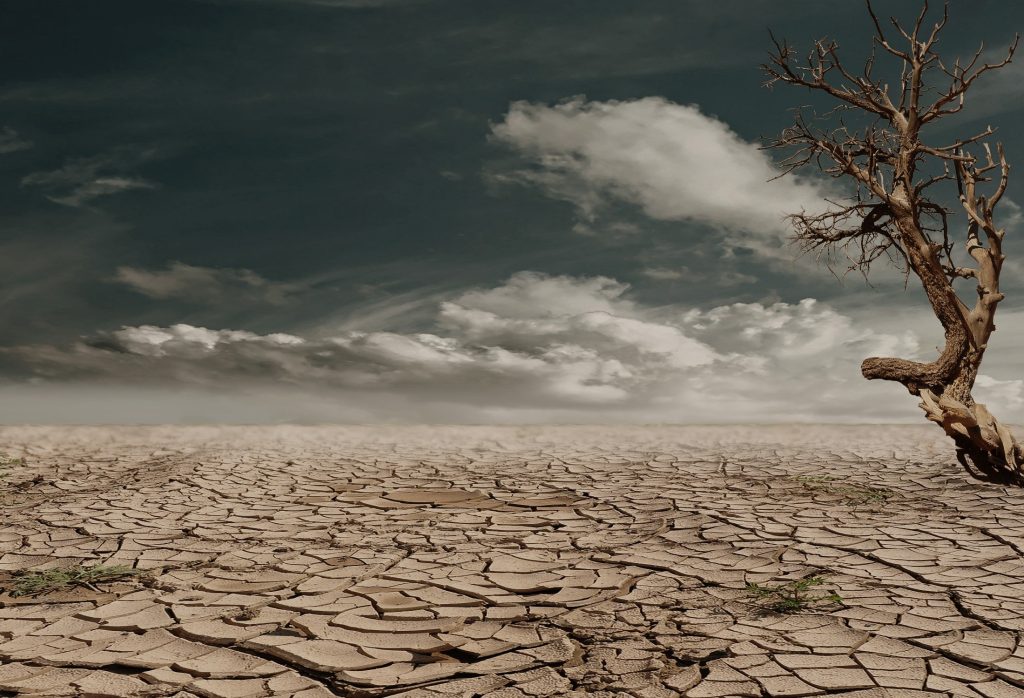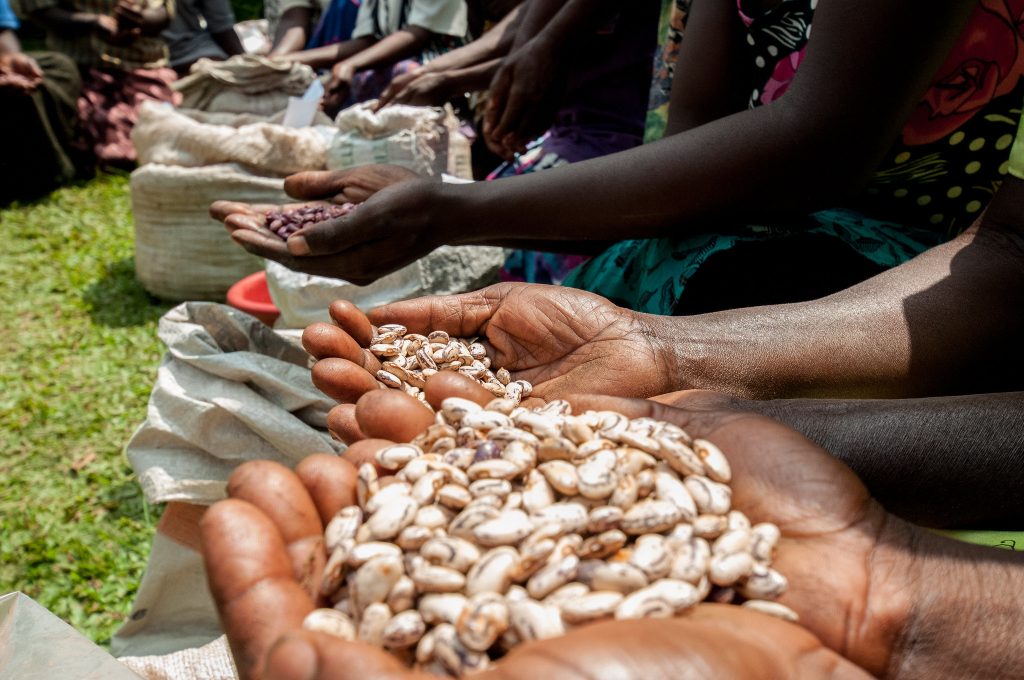Climate change will impact everyone, but not equally. Experts predict that the changing climate will negatively affect Africa’s agriculture.
The most impactful socioeconomic system in Africa is the food system. The globally recognised McKinsey Global Institute investigated climate change effects in Africa. They used analytical tools of economics and the insights of business leaders to inform their research. Their study identified socioeconomic systems that connect certain factors to climate change. They concluded that the food system is one of the most important for Africa. This is partly because the other factors, such as natural capital, also connect to the food system.
Unfortunately, agriculture is likely to become more difficult in many parts of Africa. This is due to weather patterns becoming less favourable and decreasing crop yields. Scientists measured rainfall between 1998 and 2017 to predict trends. They found that rainfall is likely to decrease by 2030. This will naturally cause widespread drought.

How does climate change affect agriculture in Africa?
Many parts of Africa will struggle to produce food if climate change continues. Already, weather patterns are becoming less favourable to crop and livestock yields.
Africa’s food systems revolve around the production of wheat, corn (maize), rice, and soy. These have often faced multiple-year crop failures because of not enough rain. This is because African crops and livestock need rain-fed irrigation. Unfortunately, this may be adversely affected by climate change weather conditions.
By 2050, Africa may experience average temperature increases of 2.6 – 3.0°C. This will plunge both northern and southern Africa into extreme hot conditions. Sadly, this will likely bring longer and more frequent droughts to Africa.
Three main climate change threats affect Africa’s farmers:
- Extreme weather. For example: droughts, floods, severe storms, heat waves, cold snaps, and frosts. These disrupt the once-predictable weather patterns that farmers could rely on. Thus, making it harder to grow crops.
- Pests and diseases. Changes in temperatures and moisture conditions allow crop diseases and pests to thrive. For example, recently armyworms devastated maize crops—with severe effects to farmers’ livelihood.
- Hotter temperatures over time. Experts expect global average temperatures to rise over the coming decades. This will lead to deserts and thus smaller harvests in Sub-Saharan Africa. Estimates suggest global temperatures will increase by 4°C by the year 2100. If nothing changes, it will result in 20 percent or more decline in maize yields.
Six ways African farmers can mitigate climate change impacts on agriculture
Although the future may look grim, hope remains in the form of remedial treatments. Governments could institute policies which mitigate these effects. For example, governments might increase farmland to increase food production.
These remedial treatments include:
1. Irrigation
Many point to irrigation in Africa as the fastest way to increase available farmland. A good example is Ethiopia, which has expanded irrigation faster than any other African country. It increased its irrigated farmland by more than 50 percent between 2002 and 2014. In addition, they invested in a digital soil-fertility mapping system, increasing food security. They also reduced the poverty rate from 44 to 21 percent (between 2000 and 2018). Crop-specific fertilizers further enhanced these benefits, thus improving agricultural productivity.
2. Monitoring and Innovation
In other African countries, innovative Climate Services helped farmers’ make better decisions. They could thus adapt to climate changes using the global monitoring system. Effective climate information supports better farmers’ decision-making. However, this solution only provides data. Farmer’s may not make appropriate decisions based on the data provided. As such, this approach works best alongside other solutions.
3. Modern Training
Training is also a vital component of Africa’s agriculture and food systems. Historically, farmers have passed down farming knowledge from one generation to the next. Farmers use this as their source of information about crops. Unfortunately, much of this information is now outdated. as new technology outstrips old, such as in agriculture. Modern training can be a quick and effective way to help improve crop production.
Some examples of modern farming techniques include:
- Sustainable farming methods to benefit soils
- Distributing trees grown alongside farm crops which help capture carbon
- Training on improving soils
- Training on preventing erosion and water run-off
These modern methods could improve agricultural output, and thus help offset the effects of climate change.

4. Machine-learning Algorithms
Machine-learning sounds more like science-fiction than farming tool. Yet, by analysing photos of crops, they can predict crop yields. NASA Harvest has thus made satellite data actionable for farmers in sub-Saharan Africa. These algorithms are trained to recognize maize, sugar cane, and bananas. They parse photos from helmet-mounted cameras, while the farmers ride through their fields. They predict which crops are in the pictures, and then turn that data into maps of crop types. Typically, small farmers lack such data, and rely on gut feelings to improve crop yields.
5. Changing Crops
In Africa, maize is the number one crop, and has been grown since Europeans introduced it. So, getting Africans to switch to a cereal crop such as sorghum and millet is not considered easy. However, small grains like sorghum and millet are drought tolerant, and nutrient-rich. As such, they may hold the key to health and wealth for smallholder farmers in the face of climate change. This is because these crops take less water. At the same time, they can also spring back after long periods of drought.
6. Climate-smart seed policy and seed systems
Lastly, one of the most effective ways to adapt revolves around the dominant seed system. A seed system is a method of distributing a known variety and type of seed to a farmer to plant as crops. International development agencies introduced the current system, which affects Sub-Saharan African agriculture. This system hasn’t changed, despite changing yields. This implies that new seed types need to be used or crop seeding needs to be rotated to improve crop yield. This system represents a commercialized and formalized seed sector system. Although it was introduced for consistency, it has many problems, and needs to be replaced. Climate-smart seed policies and seed system development strategies account for different farming systems.

Traditional Farming vs Climate Change
Traditional African farming methods won’t produce enough food as the climate changes. Unfortunately, many African farmers use methods passed down through generations, with little variation. For example, in Ethiopia, Malawi, and Tanzania 80% of the population rely on agriculture as their core livelihood activity. Meanwhile, about 80% of the seeds that farmers use comes from non-formal seed sources. This means they can’t predict crop outcomes. These problems make the seed system unable to adapt to Africa’s need to modify the crops that are grown. This is particularly true for maize which is heavily dependent on water. African crops need to withstand climatic conditions, such as drought, heat tolerance, or floods, to have a resilient system.
Transforming African agriculture would undoubtedly have large economic, social, and political consequences. Introducing farming techniques was (and is) largely controlled by government agencies. They aligned to practices introduced from Global North countries, or simply handed down from father to son. Although these practices brought uniformity to food production, they also introduced significant bureaucracy. The seed system alone stops mass adoption of more resilient systems of farming. Further, farms are significantly smaller in African countries than they are in Global North countries. Thus, they require different methods.
Navigating climate change in Africa
The Global Food System to permanently end poverty and hunger by 2030, would be a good way to deal with climate change. This framework involves six key elements to ensure a climate-smart agriculture. Two of these are designed around seeds and seed systems. The first “promotes the adoption of drought and flood tolerant crop varieties.” Examples include drought-tolerant maize and scuba rice. Secondly, harmonising seed standards and certification would ease administrative procedures. This would allow more seed trade and encourage access to a wider diversity of seed varieties.
The future of Africa requires a nuanced understanding of its people. Understanding why they need to change their practices will ensure that they not only survive but THRIVE. Historical data lacks a specifically African focus for the future. As such, more research needs to be performed by the McKinsey Global Institute and other research bodies, particularly outside South Africa. Estimates can then be brought to the attention of those who want to help Africa. With better data, both Africa and the Global North can better contribute to Africa’s development future.
The THRIVE Platform uses a strategy that changes by enterprises, cities, and governments. It can see projected effects on society and the environment. To help us develop this platform to help Africa, and the world, THRIVE, donate now or volunteer with us.
This article was written with the help of THRIVE members Rolf Pfotenhauer and Rebecca Deer.























